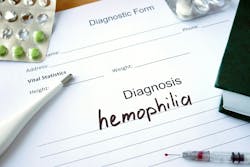ISTH releases evidence-based clinical practice guideline for hemophilia treatment
The International Society on Thrombosis and Haemostasis (ISTH) has published clinical practice guidelines utilizing strict GRADE methodology for the treatment of congenital hemophilia A and B.
As one of the first comprehensive guidelines based on the Grading of Recommendations Assessment, Development, and Evaluation (GRADE) approach it provides a rigorous and structured decision-making framework for clinicians, healthcare professionals, patients and their caregivers.
The objective of this guideline is to offer a comprehensive overview of evidence in making informed treatment decisions. Developed over several years, the ISTH assembled a multidisciplinary panel comprising physicians and patient representatives with global representation, balanced to mitigate potential biases. This diverse panel prioritized key clinical questions and outcomes crucial for both clinicians and patients.
The recommendations underwent rigorous analyses, including public commentary, ensuring comprehensiveness, transparency and inclusivity.
The culmination of this endeavor is a set of 13 recommendations, addressing critical aspects of hemophilia A and B care. They are accompanied by extensive remarks providing additional context and guidance for interpretation and implementation.
Among these recommendations, strong endorsements advocate for prophylactic treatment over episodic interventions for severe and moderately severe hemophilia A and B, underscoring a paradigm shift in clinical practice.
Recognizing that hemophilia is a rare and complex disease that poses challenges for guideline development and implementation, the new guideline contributes valuable insights into the evolving hemophilia treatment landscape. It illustrates and emphasizes the importance of patient involvement and shared decision-making in treatment decisions and advocates for individual and situational therapeutic choices. Moreover, the guideline addresses important gaps in scientific data and identifies critical research priorities.
To provide important context, commentaries have been published alongside the guideline to provide further guidance on its interpretation and implementation. The commentaries, authored by preeminent experts also address challenges for clinical practice and policy, discuss strengths and limitations of the GRADE methodology for rare diseases, share how observational data can add highly valuable information in the absence of RCT data and comment on the pros and cons of the guideline.

